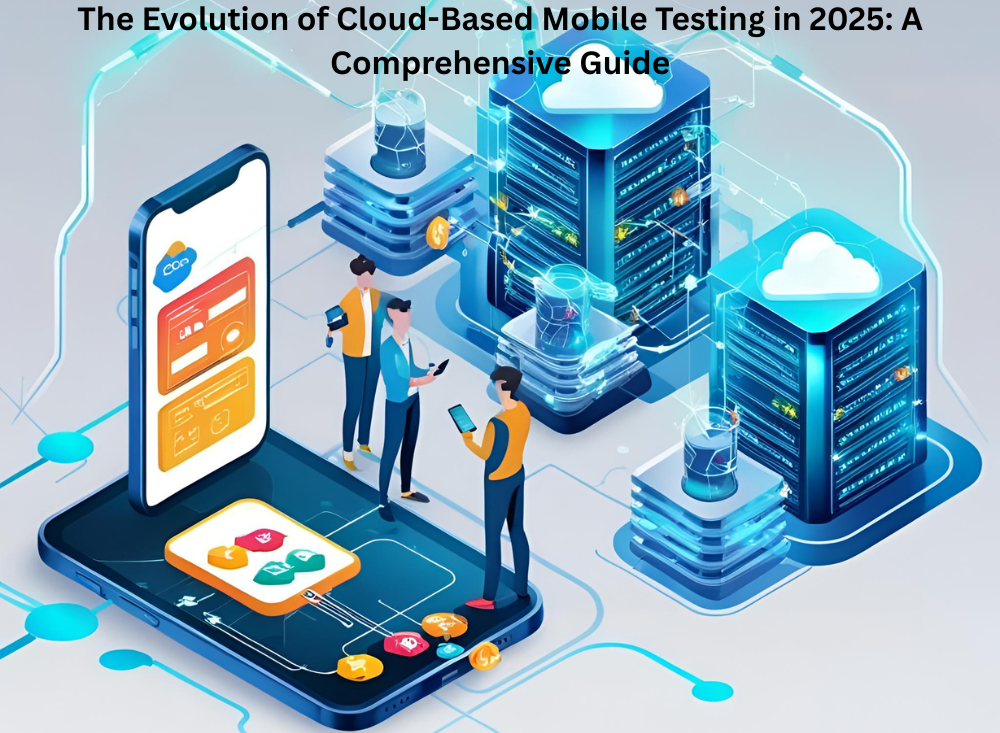
Introduction: The New Era of Mobile Testing
In today’s hyper-competitive app market, cloud-based mobile testing has become the backbone of successful QA strategies. As we progress through 2025, this approach has evolved far beyond simple device emulation, offering development teams unprecedented capabilities to ensure flawless user experiences across an increasingly fragmented device ecosystem.
Why Cloud Testing is Indispensable in 2025
- The Device Explosion Problem
With over 24,000 distinct Android device configurations and Apple’s expanding iPhone lineup, maintaining an in-house device lab is both impractical and cost-prohibitive. Cloud testing provides instant access to:
- Every major device released in the past 5 years
- Regional variants with carrier-specific modifications
- Prototype devices for forward compatibility testing
- 5G/6G Network Complexity
Modern networks introduce testing challenges that cloud platforms uniquely address:
- Real-world simulation of 5G standalone vs. non-standalone modes
- Network slicing performance validation
- Edge computing latency testing
- The AI Testing Revolution
Advanced platforms now incorporate machine learning to:
- Automatically detect and categorize visual regressions
- Predict performance bottlenecks before code commits
- Generate intelligent test cases based on real user flows
Cutting-Edge Capabilities of Modern Cloud Testing
1. Hyper-Parallel Execution
Leading solutions now support:
- Concurrent testing across 500+ device combinations
- Smart test distribution based on device capabilities
- Dynamic resource allocation for optimal throughput
2. Real User Condition Simulation
Beyond basic network throttling, today’s cloud testing can replicate:
- Battery saver mode impacts
- Background app interference
- Memory pressure scenarios
3. Integrated Security Validation
Cloud platforms now incorporate:
- Automated penetration testing
- Regulatory compliance checks (GDPR, CCPA)
- Data leakage prevention analysis
Overcoming Cloud Testing Challenges
While transformative, cloud testing requires careful implementation:
1. Data Privacy Management
Best practices include:
- Using synthetic test data generation
- Implementing zero-retention policies
- Leveraging on-premise hybrid solutions for sensitive data
2. Test Environment Consistency
Solutions involve:
- Version-controlled test environment templates
- Containerized test execution
- Automated environment validation checks
3. Performance Benchmarking
Advanced approaches now focus on:
- Thermal performance baselines
- Energy consumption metrics
- Real-world performance scoring
The Future: What’s Next for Cloud Testing
Emerging innovations set to transform the landscape:
- Quantum computing-assisted test optimization
- Predictive analytics for pre-release quality scoring
- Autonomous testing agents that self-improve over time
Strategic Implementation Framework
For teams adopting cloud testing in 2025:
- Assessment Phase
- Map critical user journeys
- Identify device coverage requirements
- Establish performance benchmarks
- Integration Approach
- CI/CD pipeline incorporation
- Smart test scheduling
- Failure analysis workflows
- Continuous Optimization
- Usage pattern analysis
- Cost-performance balancing
- Emerging capability adoption
Conclusion: The Cloud Testing Imperative
In 2025’s app ecosystem, cloud-based mobile testing has transitioned from convenience to necessity. The combination of device diversity, network complexity, and user experience demands makes traditional testing approaches obsolete. By fully leveraging modern cloud testing capabilities, development teams can achieve:
- 40–60% faster release cycles
- 80% reduction in post-launch critical issues
- 30% improvement in user retention metrics
The most successful organizations aren’t just using cloud testing — they’re building their entire quality assurance strategy around it. As we look toward 2026, this approach will only grow more sophisticated, with AI-driven testing becoming increasingly autonomous and predictive.
The question is no longer whether to adopt cloud testing, but how to maximize its transformative potential for your mobile quality strategy.